What to do if the Brother Printer cover is open?
- MMiguel TurnerJul 25, 2025
If the Brother Printer cover is open, close the front cover of the printer.
What to do if the Brother Printer cover is open?
If the Brother Printer cover is open, close the front cover of the printer.
Explains the meaning of various icons used throughout the user manual to convey important information.
Provides essential instructions to ensure the safe operation and handling of the printer to prevent hazards.
Lists all the items included in the printer package, ensuring users have everything needed for setup.
Details regarding the correct type of interface cable and connection procedures for the printer.
Diagram and labels identifying the external components on the front of the printer.
Diagram and labels identifying the external components on the back of the printer.
Guidance on selecting an appropriate location for the printer to ensure optimal performance.
Specifies the electrical power requirements and voltage range necessary for printer operation.
Details recommended temperature and humidity ranges for printer installation and use.
Introduction to paper types and their usage within the printer's paper trays and slots.
Details on the various paper media types and sizes supported by the printer.
Specific recommendations for paper quality, weight, and type for optimal printing results.
Guidelines and precautions for printing on various types of envelopes.
Defines the margins on paper where printing is not possible for different paper sizes.
Instructions for loading and printing on plain paper and transparencies using the paper tray.
Steps for printing using the manual feed slot for various paper types.
Instructions for printing on thick paper, labels, and envelopes via the manual feed slot.
Introduction to the duplex printing feature and general guidelines for printing on both sides.
Step-by-step guide for performing manual duplex printing using the paper tray.
Step-by-step guide for performing manual duplex printing using the manual feed slot.
Details on correct paper orientation for manual duplex printing for various paper sources.
Explains the role of printer drivers and how to install them for supported operating systems.
Details on various settings and features available within the printer driver for Windows.
Covers advanced print quality, duplex, watermark, and device option settings.
Provides instructions for removing the printer driver software from your computer.
Information on utilities like BRAdmin Light/Professional and Web BRAdmin for printer management.
Explains the feature that automatically selects USB or Ethernet based on data reception.
Details on the Remote Printer Console software for independent printer setting adjustments.
Explains the meaning of the Toner, Drum, Error, and Ready LEDs on the printer's control panel.
Describes LED patterns indicating service calls and how to report errors to support.
Details the various functions of the Go button, including cancel, wake-up, and reprint.
Instructions on how to print a test page using the Go button or printer driver.
How to print a page displaying the current printer configuration settings.
Instructions for printing a list of the printer's internal fonts.
Procedure to reset network settings, including password and IP address, to default values.
Guidance on when and how to replace consumable items like toner cartridges and drum units.
Details about toner cartridge types, yield, and status messages.
Step-by-step instructions for safely replacing the toner cartridge.
Information on drum unit life, estimated page yield, and status messages.
Detailed steps for safely removing and installing a new drum unit.
General guidelines and precautions for cleaning the printer's exterior and interior.
Instructions for cleaning the outside surfaces of the printer using a dry cloth.
Steps for cleaning the internal components, including the scanner window.
Procedure for cleaning the corona wire to resolve print quality issues.
Initial checks and steps to identify the cause of printer problems.
How to interpret and resolve error messages reported by the Status Monitor.
Information on error messages that the printer may output directly.
Common issues related to paper feeding and recommendations for resolution.
Detailed steps for safely removing jammed paper from the printer.
Tips and solutions for common print quality issues like faint or smudged prints.
Troubleshooting steps for unexpected printing behavior or garbage data output.
Guidance for resolving problems related to network connections for supported models.
Troubleshooting steps for Macintosh users experiencing issues with USB printer connection.
Technical specifications related to the printer's engine, including print speed and resolution.
Technical details about the printer's controller, processor, memory, and interface.
Information on supported printer drivers and utilities for various operating systems.
Overview of the printer's control panel components, including LEDs and buttons.
Specifications for paper input capacity, output, and duplex printing capabilities.
Details on the types of media, weights, and sizes supported by the printer.
Information on toner cartridges and drum units, including part numbers and yields.
Physical dimensions and weight specifications for the printer.
System requirements for operating systems, processor, RAM, and hard disk space.
Guidance on choosing appropriate paper based on basis weight, grain, and acid content.
Information on how paper moisture content affects printing and recommendations for storage.
A comprehensive list of supported paper sizes in millimeters and inches.
Instructions for accessing and using the printer's web-based management interface.
Lists available symbol and character sets for HP LaserJet emulation modes.
Reference guide for control commands used to print barcodes and expanded characters.
Provides example code snippets for generating barcodes and expanded characters.
Contact information for Brother support and service centers in Europe.
Information regarding radio interference, ENERGY STAR, and laser product specifications.
Details on compliance with radio interference standards for 220-240 volt models.
Statement confirming the product meets ENERGY STAR guidelines for energy efficiency.
Information on the printer's classification as a Class 1 laser product.
Details on maximum radiation power, wavelength, and laser class for user safety.
Essential safety instructions concerning power connection, grounding, and general usage.
Instructions for safely disconnecting the printer from the power outlet.
Cautionary advice regarding LAN connections to prevent overvoltages.
Specific wiring information and safety advice for users in the UK.
Formal declaration of the product's compliance with relevant European directives.
Contact information for Brother support and service centers in USA and Canada.
Contact details for customer service and technical support in USA and Canada.
Information on how to locate authorized Brother service centers in USA and Canada.
Instructions and contact information for ordering genuine Brother printer supplies.
Information on FCC and Industry Canada compliance statements for USA and Canada.
Formal declaration of the product's compliance with US Federal Communications Commission rules.
Statement confirming the product's compliance with Canadian Industry standards.
Statement confirming the product meets ENERGY STAR guidelines for energy efficiency.
General safety warnings and information related to laser devices within the printer.
Information on laser safety standards and compliance for 110-120 volt models.
Details on US FDA regulations for laser products manufactured for 110-120 volt models.
Specifications for internal laser radiation, including power, wavelength, and class.
Essential safety instructions concerning power connection, grounding, and general usage.
Instructions for safely disconnecting the printer from the power outlet.
Cautionary advice regarding LAN connections to prevent overvoltages.
| Color | No |
|---|---|
| N-up printing | 2, 4, 9, 16, 25 |
| Print technology | Laser |
| Maximum resolution | 2400 x 600 DPI |
| Time to first page (black, normal) | 10 s |
| Print speed (black, normal quality, A4/US Letter) | 22 ppm |
| Internal memory | 16 MB |
| Sound power level (standby) | 27 dB |
| Sound pressure level (printing) | 51 dB |
| Total input capacity | 250 sheets |
| Total output capacity | 100 sheets |
| Maximum print size | 210 x 297 mm |
| Media weight (tray 1) | 60 - 105 g/m² |
| ISO A-series sizes (A0...A9) | A4, A5, A6 |
| ISO B-series sizes (B0...B9) | B5, B6 |
| Maximum ISO A-series paper size | A4 |
| Multi-Purpose Tray media weight | 60 - 163 g/m² |
| Network ready | Yes |
| Supported network protocols (IPv4) | IPv4: TCP/IP, ARP, RARP, BOOTP, DHCP, APIPA, WINS/NetBIOS, DNS resolver, mDNS, LLMNR responder, LPR/LPD, Port 9100, IPP, FTP Server, POP before SMTP, SMTP AUTH, APOP, TELNET, SNMP, HTTP, TFTP, SMTP Client, ICMP. IPv6: TCP/IP, NDP, RA, DNS, LLMNR responder |
| Power supply type | AC 220V 50/60 Hz |
| Power consumption (active) | 460 W |
| Compatible operating systems | Windows Vista, XP(32/64 bit), Server 2003, 2000 Pro, Mac 10.2.4, Linux |
| Package weight | 8400 g |
| Sustainability certificates | ENERGY STAR |
| Power consumption (off) | 7 W |
| Power consumption (standby) | 80 W |
| Dimensions (WxDxH) | 368 x 361 x 170 mm |
|---|
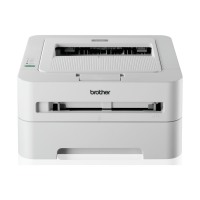



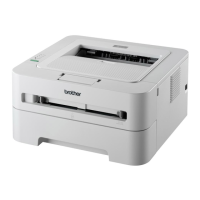
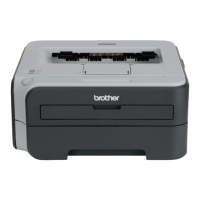
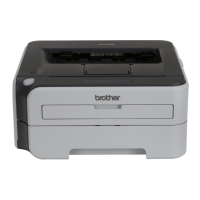
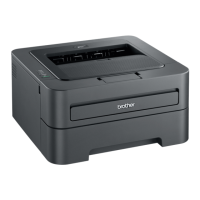
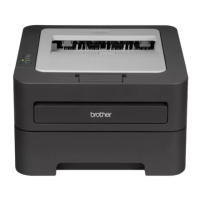

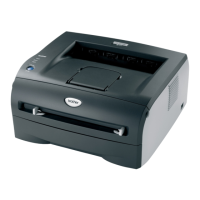

